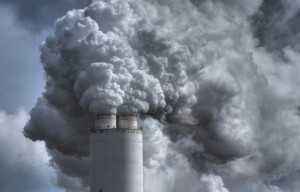
The Supreme Court voted twice on Monday in the case UTILITY AIR REGULATORY GROUP v.ENVIRONMENTAL PROTECTION AGENCY, handing the EPA a victory in one vote but struck down the EPA in another.
In a 7-2 vote, the Supreme Court ruled that the EPA could force major polluters, such as coal-fired plants and factories, to utilize new and improved technology to limit CO2 emissions. Scalia was joined by Justices Sotomyer, Kagan, Ginsberg, Breyer, Kennedy, and Roberts in that vote.
Of this first decision, the EPA said, “Today, the Supreme Court largely upheld EPA’s approach to focusing Clean Air Act permits on only the largest stationary sources of greenhouse gases such as power plants, refineries, and other types of industrial facilities. The Supreme Court’s decision is a win for our efforts to reduce carbon pollution because it allows EPA, states and other permitting authorities to continue to require carbon pollution limits in permits for the largest pollution sources.”
But, in a 5-4 vote, the court also said that could not extend that same requirement to millions of other facilities. Scalia said of that decision, “An agency has no power to ‘tailor’ legislation to bureaucratic policy goals by rewriting unambiguous statutory terms.” Scalia was joined in that decision by Justices Roberts, Kennedy, Thomas, and Alito.
Of that decision, the National Federation of Independent Business said in a statement, “If this rule had been allowed to stand, small-business owners such as ranchers, farmers, manufacturers, restaurant owners and others would have seen more paperwork, more oversight and fines.”
Justice Antonin Scalia said in the courtroom, “It bears mentioning that EPA is getting almost everything it wanted in this case.” From the bench he said, “It sought to regulate sources it said were responsible for 86 percent of all the greenhouse gases emitted from stationary sources nationwide. Under our holdings, E.P.A. will be able to regulate sources responsible for 83 percent of those emissions.”
